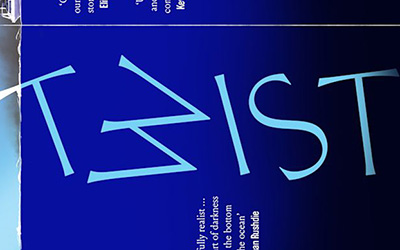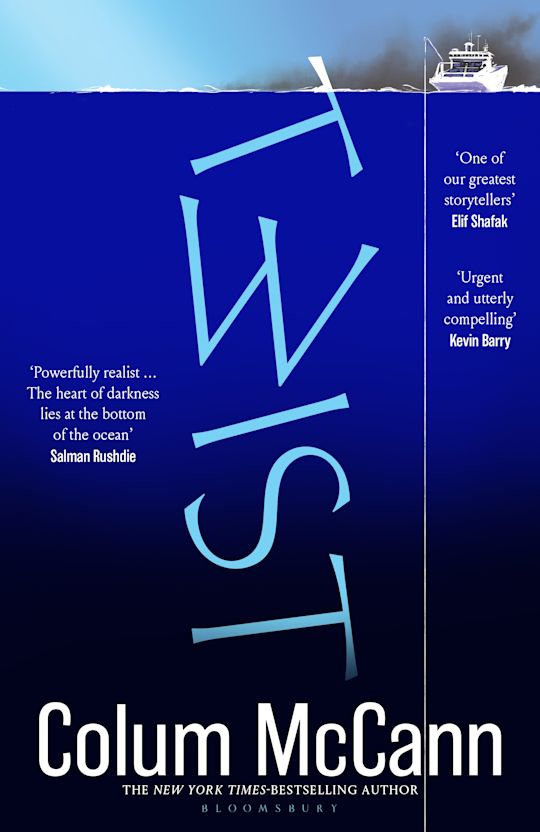
- Free Article: No
- Contents Category: Fiction
- Review Article: Yes
- Article Title: Horror time
- Article Subtitle: A contemplative and confounding novel
- Online Only: No
- Custom Highlight Text:
Connections made across time and space have long been a focal point of Irish writer Colum McCann’s oeuvre. From the construction of the first railway tunnels under New York (This Side of Brightness, 1998) to his singular portrayal of the history and emotional toll of the Israeli-Palestinian conflict in Apeirogon (2020), McCann has weighed what it means to tether oneself to another person, another place, another moment in history. Even his recent foray into non-fiction – American Mother (2024), written with Diane Foley, whose journalist son James was brutally murdered by ISIS – concerns itself with Foley’s attempt to find some sort of bridge between herself and her son’s killers.
- Featured Image (400px * 250px):

- Alt Tag (Featured Image): Diane Stubbings reviews ‘Twist: A novel’ by Colum McCann
- Book 1 Title: Twist
- Book 1 Subtitle: A novel
- Book 1 Biblio: Bloomsbury, $32.99 pb, 239 pp
- Book 1 Cover Small (400 x 600):

- Book 1 Cover (800 x 1200):

- Book 1 Readings Link: https://www.readings.com.au/product/9781526656957/twist--colum-mccann--2025--9781526656957#rac:jokjjzr6ly9m
McCann has built these novels around some stunning metaphors: sandhogs burrowing through the mud of the Hudson River, a hair’s breadth from drowning; a man walking a tightrope between two New York skyscrapers (Let the Great World Spin, 2009); and the first non-stop flight across the Atlantic (TransAtlantic, 2013; a reflection of Irish-American McCann’s own transatlantic trajectory).
Twist also concerns itself with connections, McCann’s metaphor here the cables that run beneath the oceans, carrying much of the world’s internet traffic. The configuration of these cables, ‘neat concentric rings. Like the inner workings of a tree’, mirrors a narrative structure that figures in much of McCann’s writing, that of stories within stories, ‘[t]ime within time … History within history.’ What emerges is a contemplative and occasion-ally confounding novel that examines breakdown, repair, and, vitally, the fictions we create to weld together shattered truths.
Anthony Fennell, our narrator, is ruminating on the death of John Conway. He is uncertain ‘that anybody, anywhere, is truly aware of what lay at the core of Conway and the era he, and we, lived through’. Conway was chief of mission on the Georges Lecointe, a cable repair ship running out of Cape Town. Fennell, a ‘struggling novelist and occasional playwright’, inveigles his way onboard to write an article about the ship’s operations. From their first meeting, Fennell is consumed by Conway, a man who seems ‘troubled and angelic all at once … there and not there at the same time’.
The George Lecointe sets sail along the west coast of Africa, towards the Democratic Republic of Congo, searching for a broken cable that has left much of western Africa in a communications blackout. As the ship sails north, Fennell probes Conway’s attitude towards the moral dilemma of repairing a system that distorts, damages, and traumatises: ‘We’re just fixing wires, man. Not the internet. I’m not responsible for the shit that happens out there. That’s someone else’s job.’ When Conway goes AWOL from the ship, Fennell obsesses over where he has gone, and why.
The cable-break was the result of floodwaters pushing seaward from the upper reaches of the Congo River. McCann’s rendering of these floods is both fierce and majestic. The rush and turmoil of muddy waters carry the river’s entire history: ‘it was as if the Congo was purging itself’.
Twist’s allusions to Heart of Darkness are clear, although this is by no means a retelling of Joseph Conrad’s novel: Conway is no Kurtz. McCann seems more concerned with the colonialism that lingers in this supposedly postcolonial age. As seating arrangements at Donald Trump’s recent inauguration forcefully demonstrated, there is a new breed of potentate claiming sovereignty – via undersea cables and satellites in the sky – over how we think, feel, and, by extension, act.
The surge running from river to ocean, overwhelming the internet cables and allowing their flow of information – ‘the flotsam of our longings, the jetsam of our truths’ – to commingle with the detritus of Conrad’s mythologised river, carries with it an intimation that the ‘heart of darkness’, its ‘horror’, is no longer confined to the innermost reaches of an unknowable continent; is no longer embodied in the single figure of Kurtz. Rather, it is an ocean which surrounds us and into which we, every day, willingly venture, entrusting to it our identities and our futures. Where Conrad blurred the boundaries between the civilised and the savage, McCann gestures instead towards the internet’s blurring – its twisting together – of the profound and the inane. As Fennell observes, the internet is ‘that great conundrum that holds us together and apart at the same time’.
In addition to cables and the Congo, McCann utilises a crush of surplus metaphors and references – time, turbulence, free diving, climate change, Waiting for Godot – which tend to suffocate the novel’s core ideas. As urgent as Twist’s preoccupations are, the novel’s intellectual heft outweighs its emotional force, something not helped by the three unappealing characters around whom the story revolves, nor by the muted rendering of what is at stake for each of them. The effect is a novel whose moral imperative is substantially blunted. Fennell’s shrug of a conclusion that ‘[e]verything is made to be disassembled. Not all of it can be repaired. All there is is the trying’ is hardly the ‘heart of an immense darkness’ that oppresses the conclusion of Conrad’s novel.
One indelible note in Twist stems from Fennell’s musings on the opening scene of Apocalypse Now, Francis Ford Coppola’s reimagining of Heart of Darkness. Documentaries about the making of the film reveal that, as the cameras rolled, Martin Sheen attempted to capture something of his character’s state of mind by pushing himself towards physical and mental breakdown. Fennell recognises in this scene and its real-life counterpart the torsion between fact and fiction, illusion and truth, that contemporary media and communications magnifies; the torsion that is at the heart of McCann’s novel and that might read as an epitaph for our own times: ‘One sequence, the invented, gets shown down the tube. The other, the real, gets lost in the haze.’


Comments powered by CComment